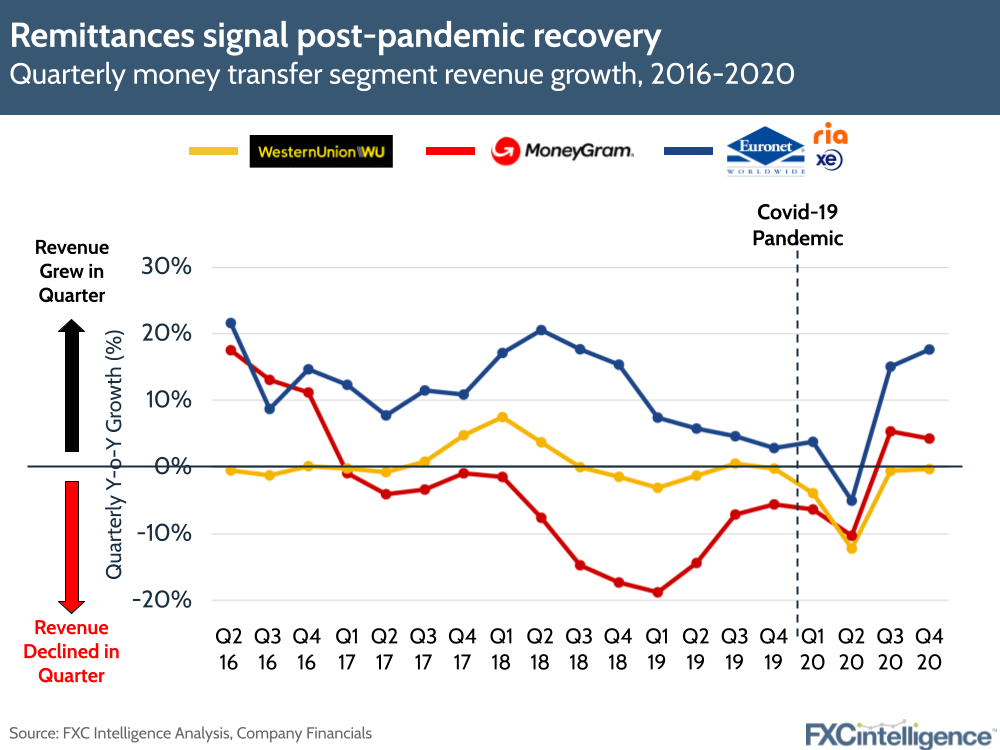The pandemic is sadly still ongoing, with vaccines providing the bright light at the end of the tunnel. In the remittance space the biggest players are already showing signs of recovery, as signalled by the latest earnings from Western Union, MoneyGram and Ria’s parent company Euronet.

While all three companies took a significant hit in Q2 2020, revenue bounced back in Q3, with the latest results showing the positive trend continuing. All three companies are at levels at least comparable to Q4 2019, with MoneyGram posting quarterly growth that is well above pre-crisis levels. Cross-border principal growth has also been strong for all, WU reported a 12% increase for 2020 and Euronet 23%.
The performance of the leading players in the market contrasts with World Bank projections, which in April 2020 warned that the global remittance market would drop by almost 20% in 2020 and later revised to a 7% decline. However, the potential impact of the collapse of Finablr should also not be overlooked. Prior to its collapse in early 2020, Finablr’s money transfer business had over $40bn in annual cross-border flows, much of which is likely to have been redistributed among other providers, boosting their principal growth.
Digital has been a major recovery driver across the board. Several companies have also reported that customers sent more money home amid the pandemic, countering some of the local challenges to the economy. Smaller, regional, cash-based players and those unable to pivot to digital are the ones who have felt the brunt of the decline.
However, the pandemic is by no means over, and the situation remains highly changeable and uncertain. The World Bank, meanwhile, is projecting a 7.2% drop in remittances in 2021 – but again in such an uncertain environment, this could easily change.
How do MoneyGram, Western Union, Ria and others compare on pricing?


